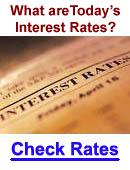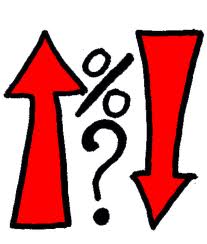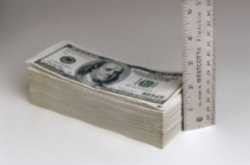Are you searching for the lowest refinance mortgage rates?
Have you shopped and think you’ve found the lowest refinance mortgage rates and closing costs?
Are you sure you found a deal, or did you find the crooked bait-n-switch lender?
A lot of consumers like to “shop around” to find the best interest rate they can for their loan. As a result, white lies, factual omissions, and out-and-out misleading statements are commonplace among loan officers in today’s insanely competitive lending market. That’s why it’s important for you, as a consumer, to understand the classic bait-and-switch technique of many lenders and loan officers. It’s basic economics—if a bank or lending institution offers consistently uncompetitive interest rates, they won’t make any loans and they won’t make any money. Last time I checked, mortgage lenders and banks are not charitable organizations. What does this mean for borrowers? This means that if one lender is quoting you significantly better than everyone one else, buyer beware!
Bait & Switch is alive and well and still living in the mortgage industry, especially from the big online internet lenders. Wasted time, lost real interest rates, and money spent on upfront fees are some of the costs of dealing with the wrong lender – and that is if you DON’T use them.
THE REALITY: Shop til you drop. All mortgage lenders are basically the same. They all get their money from the same sources, the interest rates are based on the same bond market, transfer the loan to Fannie Mae Freddie Mac or FHA, and the third parties fees they need to collect and pass through (appraisal, credit report, underwriting, title company, etc) are all the same. True mortgage interest rate differences will never be more than 1/8th (0.125%) to 1/4 (0.25%) difference between all lender across the country.
THE GAME: If lenders advertised “We are the same as everyone else”, who would you use? Therefore the game is to capture your attention and get you to call them. This is done primarily with two claims.
- Super low rate. To quote the super low rate, these bad lenders usually are hiding in discount points and other fees in order to buy down the interest rate they are quoting, or the small print says you need a credit score over 800 something.
- Super low closing costs. To quote super low closing costs, they simply forget to tell you how much higher the interest rate will be to offset those low closing costs.
Here’s a classic example of how it works at the less-than-respectable mortgage company or bank. The bank simply takes advantage of YOUR IGNORANCE when you’ve “shopped” for the best mortgage rates.
The company (or loan officer) scans today’s REAL interest rates and sees that they can realistically offer a 4.25% rate at par (no points paid by borrower) and they know this is approximately what the competition is offering. The lender see’s that if the borrower pays 2.25 points (2.25% of the loan amount), the borrower could get a 3.75% interest rate. So the loan officer or the companies automated web site quote system will tell a consumer that is shopping interest rates that he can do 3.75%. Beating all others. The lender tells the client they can’t lock the interest rate until they get an appraisal and all their documents.
Excited, the borrower believes he or she has found a diamond in the rough and agrees to do business with that lender. The lender asks for the borrower’s credit card information and takes a $500 deposit for the appraisal and gets started. The borrower sends in all their documents.
Awesome… You think you are getting an amazing deal. A week later, the appraisal has already been done, and your paperwork shows up to be signed. Wait a minute. The closing costs are nowhere near the original quote. Usually thousand of dollars higher. Then when the client is ready to lock his or her interest rate, the loan officer apologizes and says that the 3.75% rate is no longer available because interest rates have changed since the quote was made (the lender is not legally obliged to give any interest rate until a GFE has been produced and a rate lock has been entered into).
Pissed off borrowers usually at this point start calling other lenders again, only to find out that they are all quoting about the same as the company they are already working with is now really quoting. Since the borrower has already paid a $500 deposit, has made a tedious loan application, and has likely already produced documents for processing and underwriting, the borrower almost always grudgingly accepts that rates have simply risen and agrees to finish the loan process with that lender.
The classic bait-and-switch. Mislead the person shopping, rope him in with a ridiculous rate quote, and lock the person in with a substantial deposit for an appraisal. This bait-and-switch tactic is used thousands of times each day by lenders nationwide.
CLUES: Most people don’t find out they are working with a predatory lender until well into the transaction, and usually after they’ve spend money on an appraisal, or non-refundable application fee. There are some clues to look for:
- Requiring up-front money other than appraisal or a small amount for a credit report
- Not being able to lock your interest rate until AFTER you send in paperwork and the loan is approved
- Relying on ANY ONLINE SYSTEM that gives you any rate quote as a real quote
AVOID THE PERILS of mortgage rate shopping with a little homework.
- Get off the internet. No internet lender has anything better than the mortgage company down the street
- Google the name of the company plus the word fraud or scam. What do you find?
- Contact a local lender with an office you can drive to and do business with them.
- Check their reputation. Not just their advertised interest rates.
Want to see something scary? All over the internet are advertisements for amazing interest rates from an internet company called AmeriSave. Best mortgage rates anywhere that completely blow away the competition. But before you jump, read this about them, and take my advice to Google their name plus the word fraud. Still want to work with them?
 Many homeowners are thinking of refinancing to today’s historically low mortgage rates here in MN, WI, and the rest of the country. Great, yet many people make the mistake of refinancing back into another 30-year loan. Sure, you may save a few hundred dollars, but how much is it going to cost by adding back all those years? How about retirement? Wouldn’t it be nice to go into retirement WITHOUT a mortgage payment?
Many homeowners are thinking of refinancing to today’s historically low mortgage rates here in MN, WI, and the rest of the country. Great, yet many people make the mistake of refinancing back into another 30-year loan. Sure, you may save a few hundred dollars, but how much is it going to cost by adding back all those years? How about retirement? Wouldn’t it be nice to go into retirement WITHOUT a mortgage payment?

 What is a Rate QUOTE? When buying a home or refinancing, it is common to call around to many lenders to get a rate quote. A quote is not a guaranteed rate. Another common issue with getting a quote is you often get one from Lender A on Monday, Lender B on Tuesday, and Lender C on Wednesday. Rates can change daily, sometimes multiple times, so unless you get all your quotes at the same time, you don’t have accurate information. THE ONLY QUOTE THAT MATTERS IS THE DAY YOU LOCK. Many lenders quote you low to get you to stop shopping, knowing that you will usually NOT be locking the same day of the quote – especially for any purchase loans. Be wary of anyone significantly lower than anyone else.
What is a Rate QUOTE? When buying a home or refinancing, it is common to call around to many lenders to get a rate quote. A quote is not a guaranteed rate. Another common issue with getting a quote is you often get one from Lender A on Monday, Lender B on Tuesday, and Lender C on Wednesday. Rates can change daily, sometimes multiple times, so unless you get all your quotes at the same time, you don’t have accurate information. THE ONLY QUOTE THAT MATTERS IS THE DAY YOU LOCK. Many lenders quote you low to get you to stop shopping, knowing that you will usually NOT be locking the same day of the quote – especially for any purchase loans. Be wary of anyone significantly lower than anyone else.



 Don’t get piggy. Work with us. Set a goal and lock when it gets there. Are we going to hit the bottom? Probably not. Are we going to save you money? Yes. If you can save money with no out of pocket costs, than you have nothing to lose. If you want to gamble go to Las Vegas. It’s a heck of a lot more fun.
Don’t get piggy. Work with us. Set a goal and lock when it gets there. Are we going to hit the bottom? Probably not. Are we going to save you money? Yes. If you can save money with no out of pocket costs, than you have nothing to lose. If you want to gamble go to Las Vegas. It’s a heck of a lot more fun.